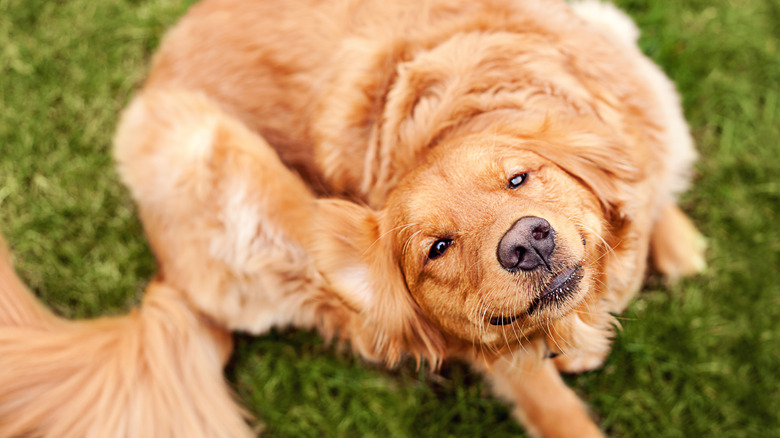Can Food Help A Dog With A Yeast Infection?
Some pet parents hold a belief that changing your dog's diet can help treat or prevent yeast infections. While yeast infections in dogs can sometimes be caused by food sensitivities, there is no proof that shows feeding your pooch a certain diet will help treat a yeast infection. If your pup happens to have undiagnosed food allergies, it is possible that a new allergen-free diet could help prevent your them from getting as many yeast infections, but it won't do anything to treat any current ones they may have.
Yeast infections are caused by an underlying condition or because a dog's skin barrier is damaged and has thus allowed a large amount of yeast to permeate and become infected, rather than having anything to do with the food they consume. Yeast infections are a common issue many canines experience, and some may be more prone to them than others. The inside of a dog's ear is especially prone to yeast infections, although they can happen on any part of the body. While a pup's diet doesn't play any role in the development of yeast infections, there are other potential causes that could explain why they may get them.
Yeast infections in dogs: causes and symptoms
The causes of a dog getting a yeast infection can vary. Sometimes, they can result from an underlying health condition. If your pup is dealing with an autoimmune or hormonal disorder, there's a chance this could be what is causing their yeast infections. If they are dealing with some sort of bacterial infection, this can also cause the skin to react and might allow for yeast infections to occur.
Since yeast infections happen when a dog's skin barrier is damaged, if your pup is dealing with allergies or some other type of skin condition, they could be more likely to get yeast infections. If your dog mainly deals with yeast infections in their ears, a likely cause could be that they have debris or water stuck there. Eardrum damage can also cause a dog to contract in-ear yeast infections. Some dog breeds also just happen to be more prone to yeast infections, including dachshunds, Chihuahuas, and poodles, amongst many others. Breeds with wrinkly skin, such as basset hounds and bulldogs, are also going to be more prone to developing yeast infections because of their wrinkles. If your pup enjoys going for a swim, they will likely be more susceptible to getting yeast infections in the ear.
Signs of a yeast infection can vary, but they usually involve itching and redness. If your dog is frequently shaking their head and their ear appears to be bothering them, they could have a yeast infection in it, especially if accompanied by other symptoms such as crusty skin and discharge. If your pup is dealing with a yeast infection on their skin, some signs to look out for include flakiness, inflammation, hair loss, and a musty scent, alongside excessive itchiness.
How to properly treat and prevent yeast infections in dogs
If your dog ever gets a yeast infection, there are ways to go about treating it that truly work and don't involve changing their diet. If you suspect your pooch has a yeast infection, bring them to the vet, where they will likely prescribe some sort of antifungal medication. Depending on the infection and where it is, you may have to use antifungal wipes or cream on the area in order to cure the yeast infection, or you possibly may need to give your dog an oral antifungal medicine if the infection is more severe.
To prevent yeast infections in the ears, the most important thing is going to be to keep them clean and dry. Be sure to keep water out of your dog's ears to prevent it from settling and causing an infection and dry out your dog's ears after they go for a swim or take a bath. When it comes to preventing yeast infections on the skin, if you have a wrinkly dog, regularly clean their skin folds. Also, use flea protection year round, as fleas can cause allergies in dogs which can then lead to yeast infections. If your dog is especially prone to yeast infections, a vet might recommend using an antifungal shampoo when bathing them. If you think your dog has a yeast infection, it's important to see a vet to rule out any underlying conditions or to diagnose any skin problems that could be causing it.


